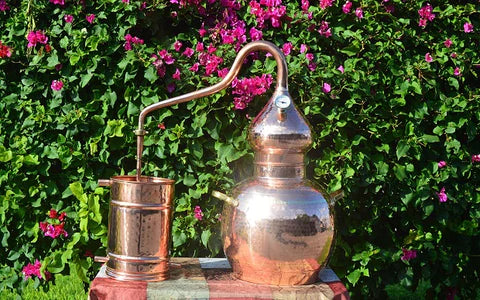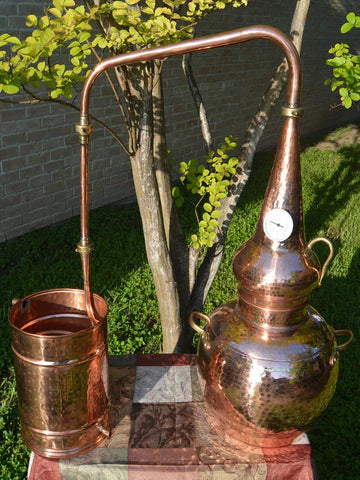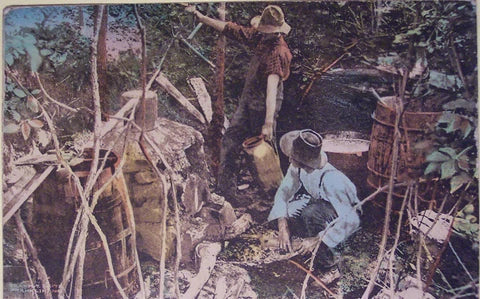Although every copper moonshine still is different, many distillers start with a basic question like “how much moonshine will my still produce?” or “how much will I get out of my 5 gallon whiskey still?”
While there is no definitive answer - you will have to make 2 or 3 batches with your particular whiskey still to understand how it operates most efficiently - we can give you some general guidelines, so that you can adjust your methods if you aren’t producing moonshine efficiently.
Factors that Affect Yield
The alcohol proof of your final product will be based on a variety of factors - the strength of the ingredients in your mash, the chemistry of how those ingredients interact, and the efficiency of your distillation run. These factors contribute to the alcohol by volume of the mash and its alcohol wash, which is then distilled into your whiskey or moonshine. Consider how each of the following will help you make the most of each alcohol run.
Yeast and Sugar
There is a delicate science to combining the yeast and the sugar in your moonshine mash recipe so that the maximum amount of sugar is fermented into alcohol. Generally, more sugar is better, but too much is waste. In addition to finding the right proportion of yeast to sugar in your whiskey mash recipe, you will want to use a distiller’s yeast instead of regular bread yeast. Distiller’s yeast has been bred to withstand higher alcohol concentrations, and so can ferment more sugar in any moonshine mash recipe.
Using a Copper Still
Temperature control is extremely important in distilling alcohol, and copper stills definitely give moonshiners the best temperature control. Ethanol alcohol vaporizes at a lower temperature than water, and in a very precise range (typically 174-195 degrees Fahrenheit), so timing your run at this temperature is key. Because copper heats evenly, it is one of the most trusted materials for kitchen and distilling equipment, and using a copper still can help you maximize the amount of time you spend at the precise temperature for distilling the most ethanol.
General Alcohol Yields
You can generally assume that your alcohol still will produce a final batch that is about 20% of the size of your copper still’s pot. For example, the average run in a 5 gallon still can be expected to produce about a gallon or a gallon and a half of moonshine. Of course, the quality of the different batches of moonshine will vary depending on many factors - you may only get ¾ of a gallon in one batch, but with a very high proof and excellent quality. Or, you may run up a batch that ends with more than a gallon, but with more “feints” that will make their way into future runs.
Standard Yields:
Most standard distillation runs will yield about:
- 3 - 6 cups of alcohol from a 1 gallon copper still
- 1/2 - 1 gallon of alcohol from a 2.5 gallon copper still
- 1 - 2 gallons of alcohol from a 5 gallon copper still
- 2 - 5 gallons of alcohol from a 10 gallon copper still
Ending the Run
 "Barrels" by William Warby
"Barrels" by William Warby
There are many clues that tell you when to end your whiskey run, but you can also guess at the end of a run based on the approximate quantity of moonshine you’ve collected. Most runs will still leave some wash at the “bottom of the barrel,” so don’t worry if you have distilled every last drop. It’s typically not worth running your copper still higher than 212 degrees Fahrenheit on your run, so that is a good indication. Generally, a distillation run might only remove 85-90% of the alcohol from the wash, but that is good enough for most moonshiners.
Each distillation run on a copper whiskey still will result in a different amount of moonshine. While there is no exact formula to accurately predict exactly how much you will get out of any run, if you are not reaching numbers close to these, consider how changing some of the factors of your distillation process will allow you to get more product out of your copper moonshine still.
Article by: Jim Thomas



